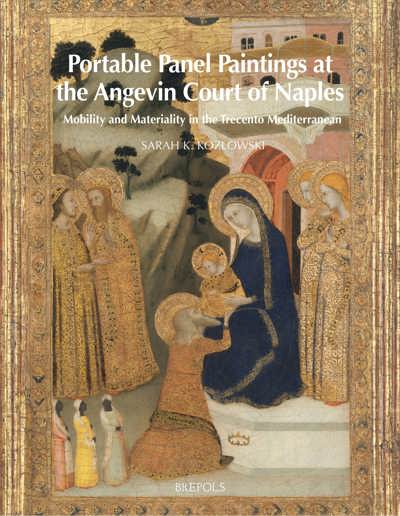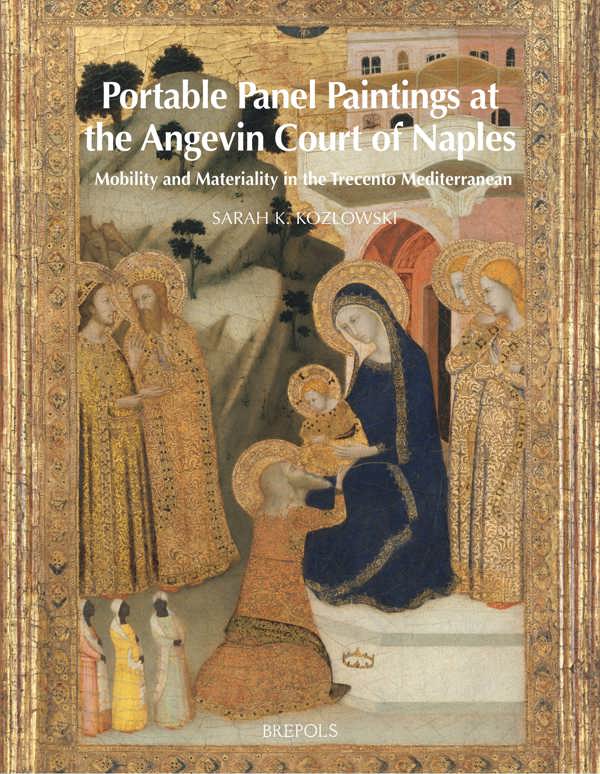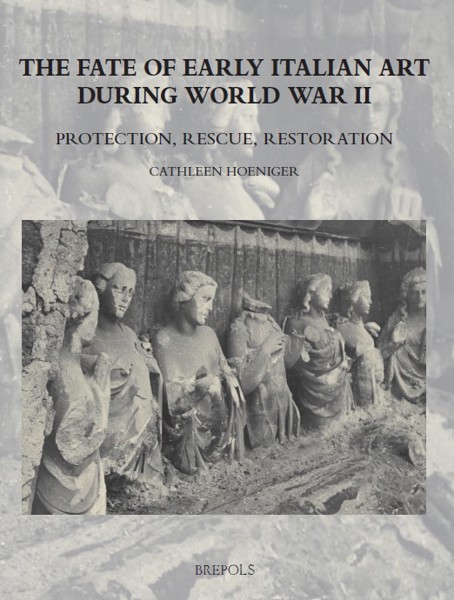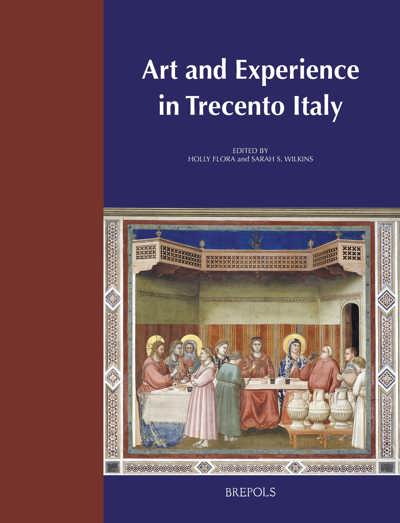
Portable Panel Paintings at the Angevin Court of Naples
Mobility and Materiality in the Trecento Mediterranean
Sarah Kozlowski
- Pages: 292 p.
- Size:216 x 280 mm
- Illustrations:11 b/w, 132 col., 2 tables b/w., 1 maps b/w
- Language(s):English
- Publication Year:2022
- € 135,00 EXCL. VAT RETAIL PRICE
- ISBN: 978-2-503-59695-2
- Hardback
- Available
Sarah K. Kozlowski’s new study of panel painting in fourteenth-century Naples explores the materialities and mobilities of the medium at and beyond the Angevin court, and reframes trecento art in the broader context of artistic circulation, exchange, and transformation across the late medieval and early Renaissance world.
« S. K. Kozlowski livre ainsi un ouvrage solidement argumenté, bien écrit et bien illustré et associé à une bibliographie dense. De plus, à plusieurs reprises, est précisé que les éléments évoqués ne sont qu’une ébauche d’un travail de recherche en cours, une première synthèse, et elle lance des pistes de réflexion et invite à creuser dans ces directions. » (Auderic Maret, dans Histara, publié en ligne l’08/04/2024)
« Finalement, par le regard panoramique porté sur le mécénat artistique des Angevins de Naples en Méditerranée, par l’observation aigüe de la matérialité des oeuvres étudiées et par la fertilité des hypothèses proposées, le livre de Sarah K. Kozlowski offre une synthèse remarquable sur la question des potentialités de la peinture sur panneau, en plus d’ouvrir des perspectives de recherche prometteuses sur le Trecento.» (Bertrand Cosnet, dans le Bulletin Monumental, 182/1, 2024, p. 100)
Sarah K. Kozlowski (BA Wheaton College, MA Williams College, PhD Yale University) is Associate Director of the Edith O’Donnell Institute of Art History at the University of Texas at Dallas, and Director of the Centro per la Storia dell’Arte e dell’Architettura delle Città Portuali at the Museo di Capodimonte in Naples. Her research centers on medieval and Renaissance southern Italy in its broader cultural and geographic contexts, and explores how artworks’ mobilities, materialities, and formats generate meaning.
This book explores the mobilities and materialities of panel painting at and beyond the Angevin court of Naples in the context of objects, materials, patrons, and painters on the move through the fourteenth-century world. It asks how panel paintings participated in and thematized patterns of circulation and exchange; how they extended the artistic and political geography of the court far beyond Naples itself; how their materialities intersected with other mediums from woven silk to precious metalwork to stone; and how painters’ formal and technical experimentation combined with painted panels’ real and imagined itineraries to create meaning.
The volume traces a series of painted panels through networks of patronage, production, gift giving, transport, and replication. It locates the making, movement, and meaning of these works in the overlapping contexts of Angevin dynastic and territorial ambitions, including the family’s stakes in the Holy Land; patterns of collecting and adapting authoritative icons; practices of royal female patronage; and painters’ engagement with the limits of the medium of panel painting itself. Each chapter weaves together sustained analysis of paintings’ pictorial and material structures, close reading of primary sources, and questions of art’s materialities and mobilities. Moving between single objects and larger patterns, between the local and the global, this study presents new research on individual works even as it reframes trecento art in the broader context of artistic circulation, exchange, and transformation across the late medieval and early Renaissance world.
Chapter 1. Panel Painting in and beyond Fourteenth-Century Naples: Mobility and Materiality
Chapter 2. Mobility and Materiality in Simone Martini’s Saint Louis of Toulouse Crowning Robert of Anjou
Chapter 3. Icons in Angevin Naples between Past and Present, the Monumental and the Mobile
Chapter 4. Artists, Patrons, and Objects on the Move: Diptychs for the Angevin Court
Chapter 5. Paint, Stone, Flesh: Portable Multipart Panel Paintings with Porphyry Exteriors
Chapter 6. Portable Panel Paintings, Royal Women as Patrons, and Court Art beyond the Court
Chapter 7. Materiality, Mobility, and Revelation in the Stuttgart Apocalypse Panels
Conclusion
Bibliography




